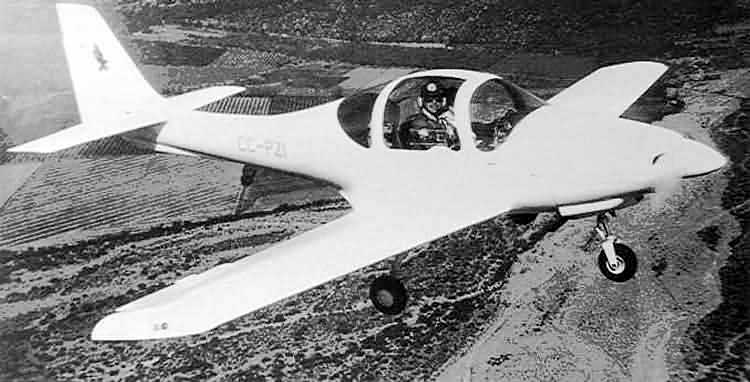07/07/2007. Remarks by Johan Visschedijk: "State-owned ENAER (Empresa Nacional de Aeronßutica) of Chili conceived the first-ever Chilean designed airplane in June 1986, and this small inexpensive club aircraft was introduced as the Avion Liviano (light aircraft) in June 1987. Powered by an 116 hp Lycoming O-235-N2C, the first prototype (CC-PZI) flew for the first time in May 1989; thereafter the side-by-side two-seater was designated Đamšu (Eaglet).
The second aircraft (CC-PZJ) was the production prototype, while being test flown the tail suffered a severe structural fatigue. Although it landed safely, it never flew again and was used as a static airframe. The third aircraft (CC-PZK) flew for the first time in March 1990, in a subsequent test flight this aircraft crashed, killing the pilot.
The fourth aircraft (CC-PZL), designated ECH-02 Đamšu, was built in kit-form. By this time, 1995, Euro-ENAER was formed at Den Helder Airport, the Netherlands, as a joint venture between a group of Dutch investors and ENAER. Supported by the Faculty of Aerospace Engineering at Delft University of Technology, the goal was to refine the design and seek European Joint Aviation Authorities and US Federal Aviation Administration certification.
The fourth aircraft was shipped to the Netherlands in 1998 and, registered as PH-EAG to Euro-ENAER, underwent an extensive flight test and modification program that has including the installation of an 160 hp Lycoming O-320-D2A engine, a revised cockpit layout, redesigned control surfaces and a new fin and rudder. Redesignated Euro-ENAER EE-10 Eaglet, it received JAR 23 certification on July 13, 2001.
A fifth aircraft was produced and registered in the Netherlands as PH-ABG on November 9, 2000. However, the joint venture was in deep financial trouble and went bankrupt in February 2002, the PH-EAG was reregistered to the Delft University of Technology on July 25, 2002, while the PH-ABG was deregistered November 18, 2002 and transferred to Chili, where it was registered as CC-PBZ. Presently it is on display at the Chilean AF Museum at Santago, labeled as CC-PZC."
